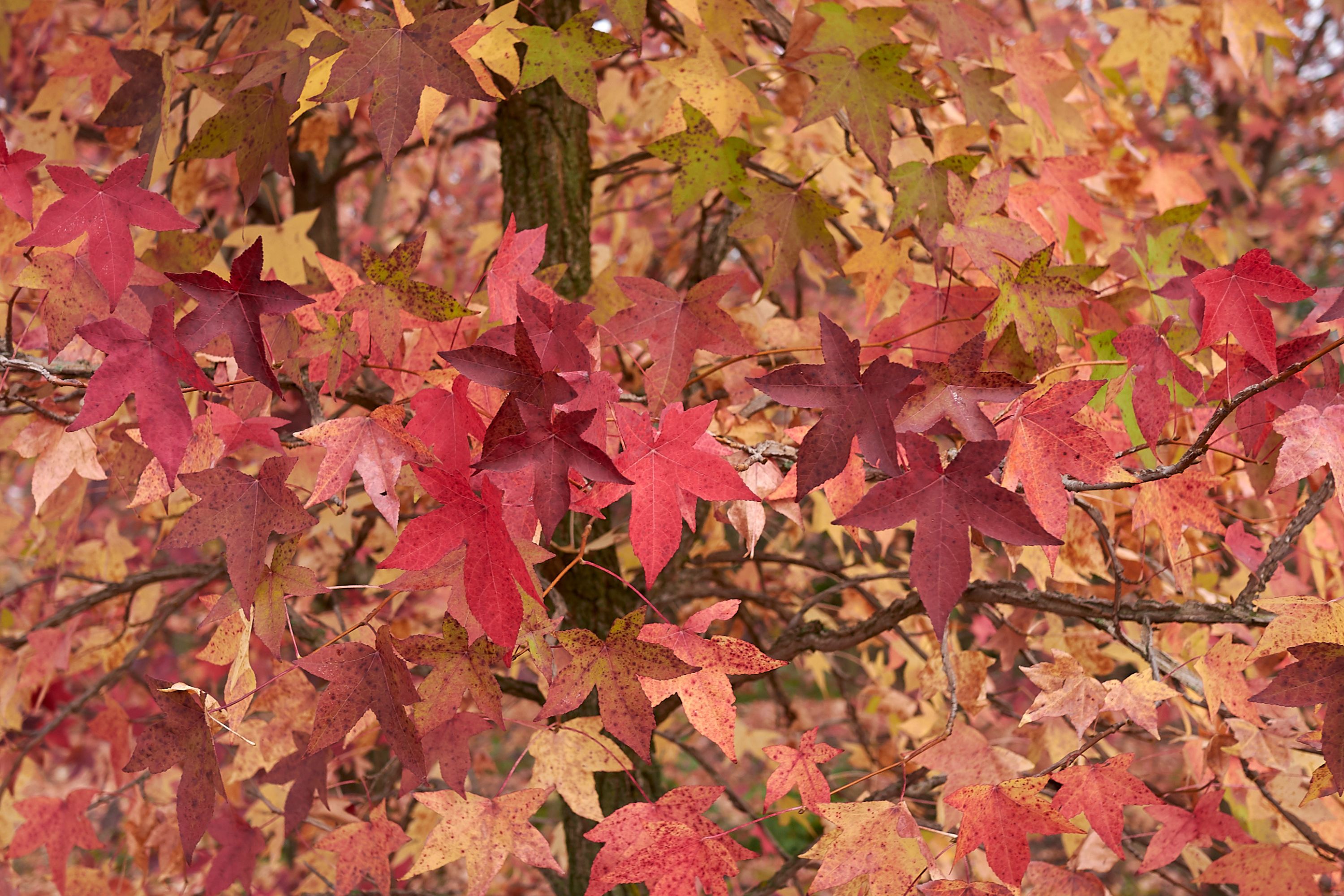American sweetgum
(Liquidambar styraciflua)

Description
Liquidambar styraciflua, commonly known as the sweetgum tree, is a deciduous tree native to North America. The tree is known for its distinctive star-shaped leaves, corky bark, and the spiky balls that it produces, which are commonly referred to as sweetgum balls. In this article, we will delve deeper into the sweetgum tree, exploring its history, physical characteristics, habitat, growing conditions, propagation, and uses. History The sweetgum tree has a long history of use by humans. The sap of the tree has been used for medicinal purposes, while the wood has been used for a range of applications, including furniture, flooring, and cabinetry. Native Americans are also known to have used the tree's resin for medicinal and ceremonial purposes. Physical Characteristics The sweetgum tree typically grows to be between 60 and 80 feet tall, although some specimens have been known to reach heights of up to 150 feet. The tree has a straight trunk and a pyramidal or conical crown, with branches that spread out widely. One of the most distinctive features of the sweetgum tree is its leaves. The leaves are star-shaped and have five or seven pointed lobes. They are typically around five inches long and have a glossy green color during the growing season, before turning a brilliant red, orange, or yellow in the fall. The bark of the sweetgum tree is also notable. It is a light gray-brown color and has deep furrows and ridges that give it a corky texture. The tree's fruit is a spiky ball that is about an inch in diameter. The balls are green and prickly when they first form, but turn brown and woody as they mature. Habitat The sweetgum tree is native to the southeastern United States, where it can be found growing in a range of habitats, including wetlands, riverbanks, and upland forests. The tree is adaptable to a range of soil types, although it prefers moist, well-draining soils. It also prefers full sun but can tolerate some shade. Growing Conditions If you're interested in growing sweetgum trees, there are a few things you'll need to know. First, the tree prefers a moist, well-draining soil. If your soil is dry or compacted, you may need to amend it before planting. The tree also prefers full sun, although it can tolerate some shade. When planting a sweetgum tree, make sure to dig a hole that is twice as wide as the tree's root ball. This will give the roots plenty of room to spread out. Once you've planted the tree, make sure to water it regularly, especially during hot, dry weather. Propagation Sweetgum trees can be propagated from seed, although the process can be somewhat tricky. The seeds need to be stratified, which means they need to be exposed to a period of cold before they will germinate. To stratify sweetgum seeds, simply store them in a plastic bag in the refrigerator for a few weeks before planting. Uses The sweetgum tree has a range of uses, both practical and ornamental. The wood of the tree is strong, durable, and has a beautiful grain pattern, making it popular for use in furniture, flooring, and cabinetry. The tree's sap has also been used for medicinal purposes, although this is less common today. In addition to its practical uses, the sweetgum tree is also popular as an ornamental tree. Its distinctive foliage and attractive bark make it a popular choice for landscaping, while its fall color adds a burst of vibrant color to the autumn landscape.
Taxonomic tree:







